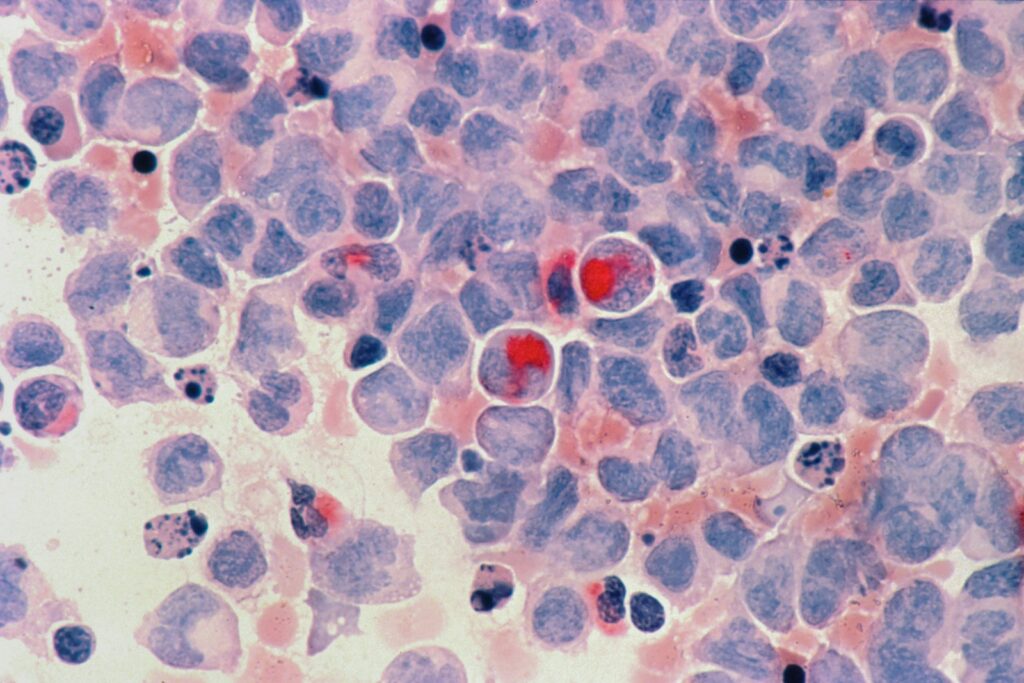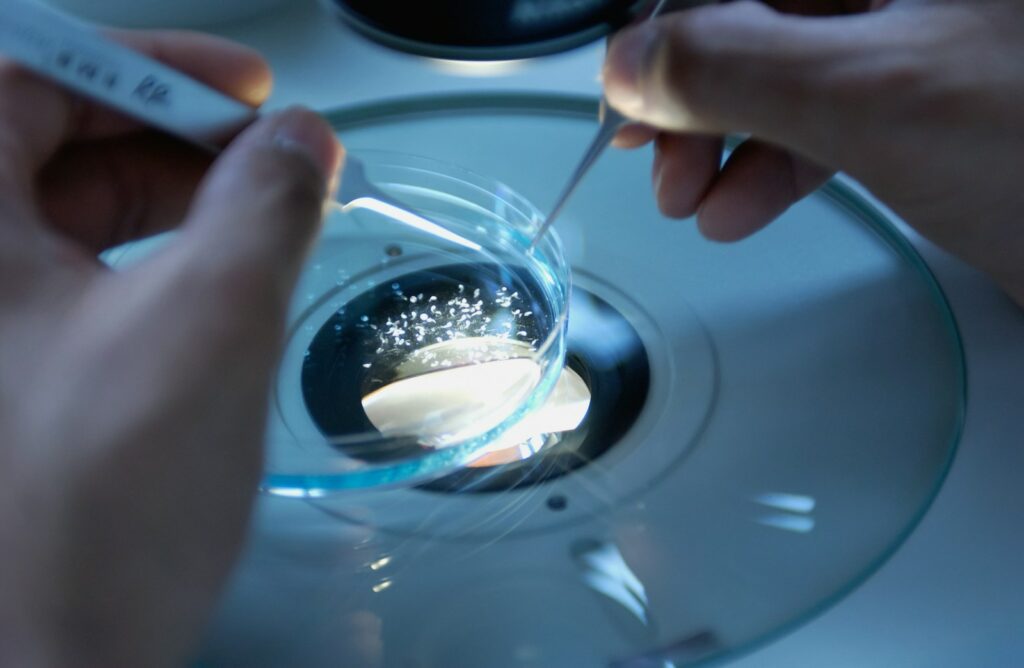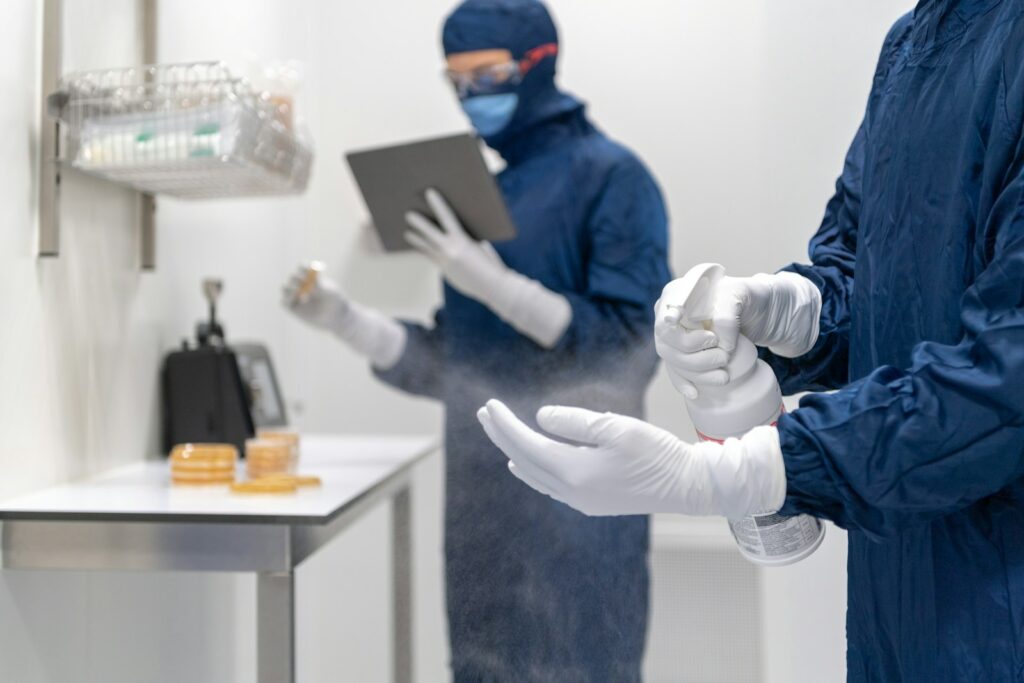Due to the strong association between point mutations and carcinogenicity, companies developing new substances incorporate gene mutation assessment into their screening at an early stage, both through in silico structural alert software and in vitro testing strategies.
Genotoxicity screening
Mutagenicty screening
GenEvolutioN provides mutagen testing and screening to evaluate the mutagenic potential of substances. The Ames test, a key regulatory tool, uses Salmonella or E. coli strains to detect DNA-reactive substances by their ability to cause mutations that revert auxotrophic bacteria to prototrophic status, allowing colony formation without supplemental amino acids. Although effective, the OECD 471 guideline Ames test requires large quantities of test substances and is complex. GenEvolutioN offers alternative screenings using as little as 50 µg of test material, enabling efficient early discovery with accurate mutagenicity predictions.
Cytogenicity screening
GenEvolutioN offers advanced screening solutions to detect structural (clastogens) and numerical (aneugens) chromosomal damage, crucial for assessing genotoxic risks. Using high-throughput methods like the OECD 487 micronucleus test (adapted to a 24-well format for efficiency) and the COMET assay for DNA strand breaks, GenEvolutioN delivers precise, large-scale toxicological insights with minimal test material. The Metafar imaging system further enhances accuracy with semi-automated analysis of 8,000 cells per screening, ensuring reliable assessments for skin-contacting substances.
Carcinogenicity screening
Not all carcinogens directly damage DNA. Some promote cancer through alternative mechanisms, such as altering cell signaling, increasing cell proliferation, or causing inflammation. To assess these risks, scientists use Cell Transformation Assays (CTA), a key method for identifying non-genotoxic carcinogens. Below, we explore how this assay works and how GenEvolutioN has optimized it for more precise and efficient screening.
Optimized screening for non-genotoxic carcinogens
The Cell Transformation Assay (CTA) identifies non-genotoxic carcinogens, which promote cancer without directly damaging DNA, but by altering cell signaling, increasing proliferation, or causing inflammation. This assay plays a key role in risk assessment and regulatory decisions by detecting substances that may induce cancer through indirect mechanisms.
While valuable, CTA results should be interpreted alongside other assays for a comprehensive evaluation. GenEvolutioN has optimized CTA (ECVAM pre-validation, OECD draft) with:
- Miniaturization in 96-well plates for high-throughput screening
- Fluorescence staining for enhanced selectivity
- Quantification of promoters’ potency
Additionally, GenEvolutioN collaborates with Biomnigene to identify carcinogen biomarkers through Next-Generation Sequencing transcriptomics, further refining risk assessment.
Skin toxicology & sensitization screening
GenEvolutioN provides advanced in-vitro skin toxicology and sensitization screening to evaluate the safety of substances in contact with the skin and eyes. Our methods comply with international regulatory standards, offering reliable, non-animal alternatives for hazard assessment.
Comprehensive testing for skin & eye safety
Our screening solutions help identify potential cytotoxic, irritant, or sensitizing effects, ensuring product safety and regulatory compliance:
- Cytotoxicity Testing (NRU, NRR, MTT) – Measures cell viability to assess potential toxic effects.
- Skin Irritation (RhE) – Evaluates skin irritation potential using reconstructed human epidermis.
- Skin Corrosion (RhE) – Assesses severe skin damage risks without animal testing.
- Ocular Irritation (RhCE) – Determines potential eye irritation using human corneal-like models.
- Phototoxicity (3T3 NRU, RhE) – Tests adverse effects caused by light exposure.
- Skin Sensitization & Photosensitization – Identifies allergic or phototoxic reactions triggered by substances.
By leveraging cutting-edge in-vitro methodologies, GenEvolutioN ensures safer formulations for pharmaceuticals, cosmetics, and chemical industries while meeting global regulatory expectations.
Endocrine disruption screening
GenEvolutioN provides advanced in-vitro endocrine disruption screening to evaluate how substances may interfere with the endocrine system. These tests help identify potential hormonal imbalances and support regulatory compliance across various industries.
Comprehensive in-vitro endocrine testing
Our screening methods detect endocrine-disrupting properties through reliable, non-animal testing approaches:
- Receptor Binding Assays – Evaluate interactions with key hormone receptors.
- Transactivation Assays (Yes/Yas Screening) – Assess the activation or inhibition of endocrine pathways.
- Cell-Based Functional Assays – Measure cellular responses to endocrine disruptors.
- Hormone Level Measurements – Quantify changes in hormone production or metabolism.
By utilizing state-of-the-art in-vitro techniques, GenEvolutioN supports safer product development and regulatory adherence, ensuring a better understanding of endocrine risks in pharmaceuticals, cosmetics, and chemicals.





